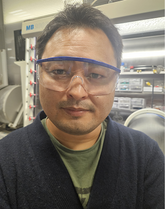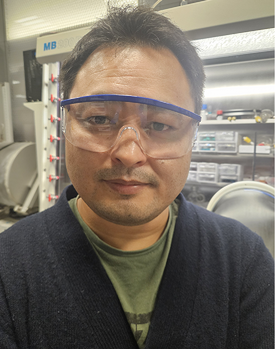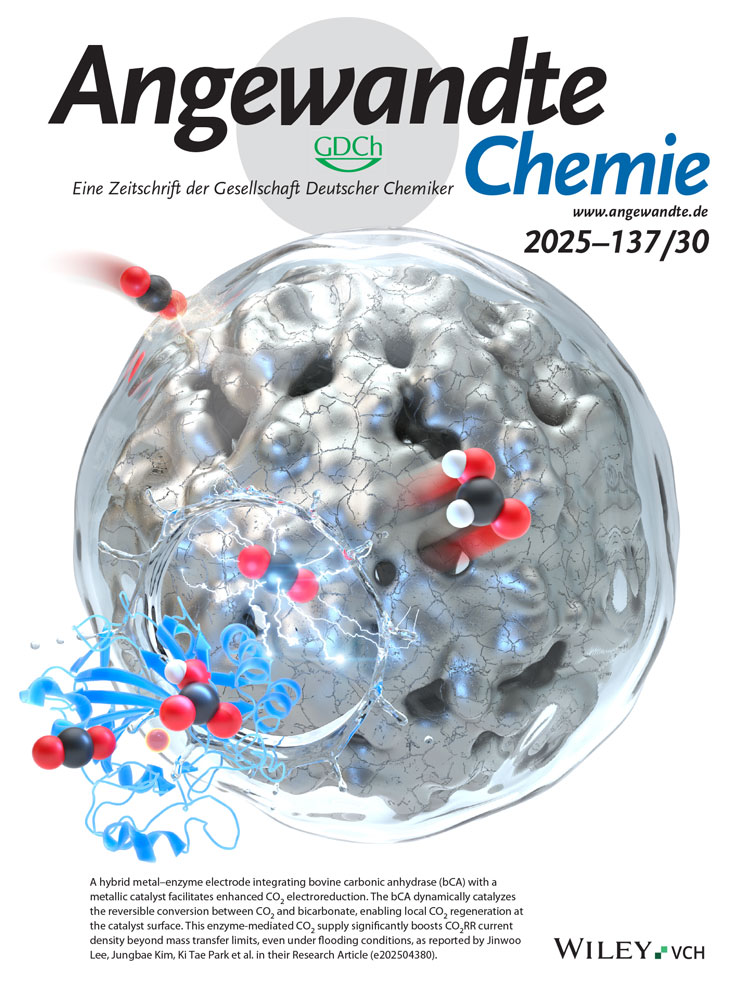Tynchtyk Amatov
Graphical Abstract

|
Position, Location: | Assistant Professor of Chemistry, The Division of Science, Chemistry Program, New York University Abu Dhabi (United Arab Emirates) |
| Homepage: | https://amatov-lab.com/ | |
| ORCID: | orcid.org/0000-0002-6404-1253 | |
| Education: | 2007, BSc and MSc, Lomonosov Moscow State University (Russian Federation) 2016, PhD supervised by Ullrich Jahn, IOCB Prague/Charles University (Czech Republic) 2016–2019, Postdoctoral researcher with Thomas Carell, LMU Munich (Germany) 2019–2022, Postdoctoral researcher with Benjamin List, Max-Planck-Institut für Kohlenforschung, Mülheim an der Ruhr (Germany) |
|
| Research: | Catalysis, organic synthesis, and radical chemistry | |
| Hobbies: | Chess, snowboarding, and history |
My first experiment was the condensation of benzaldehyde with ammonia. As a fresh undergraduate student, I had not expected it to yield the nonobvious Schiff base hydrobenzamide.
Chemistry is fun because it is both a science and an art.
My favorite example of chemistry in everyday life is photosynthesis because it converts the pollutant gas carbon dioxide into oxygen and glucose – molecules essential for life.
The most amusing chemistry adventure in my career was a brief foray into the origin-of-life research and prebiotic chemistry.
The most rewarding part of my job is solving mechanistic puzzles in our projects and teaching students.
I am most proud of my research group when they show independence in generating ideas and designing clever experiments.
The most important thing I have learned from my students is the importance of staying up-to-date with the latest technologies and tools.
When I want to treat myself to something, I drink Kumis, a traditional beverage in nomadic cultures made by fermenting horse milk.
Guaranteed to make me laugh is a good chemistry pun.
I celebrate success by thanking my team and enjoying a good dinner with my lab members.
My favorite time of day is any moment spent playing with my daughter and son.
My favorite way to spend a holiday is enjoying nature with my family in my homeland, Kyrgyzstan.
My favorite musician is Alexander Borodin, because he excelled in both chemistry and music. He also advanced women's higher education by founding a school of medicine for women in 1885.
The book currently on my bedside table is Challenges in Synthetic Organic Chemistry by Teruaki Mukaiyama. Recommended by a chemist friend, I am learning a great deal from the wisdom of this legendary Japanese chemist.
My favorite saying/quote is – I actually have two favorite chemistry-related quotes that I use in my classes. The first is “Catalysis is one molecule away from magic” by Benjamin List. The second is “When the world is in trouble, chemistry comes to the rescue” by Carolyn Bertozzi.
Behind the Science
When my “more ambitious” ideas proved too challenging due to limited resources, i found inspiration in Carolyn Bertozzi's emphasis on curiosity-driven research. This prompted me to revisit a question that had intrigued me since graduate school: Why haven't other persistent radicals been as widely used as TEMPO and its analogs? Thus, we launched a project exploring the use of non-nitroxide persistent radicals in organic synthesis and catalysis, beginning with verdazyls, which were discovered in 1963 by Nobel laureate Richard Kuhn due to their ease of synthesis. Focusing on transformations that are challenging with TEMPO, we targeted catalytic intermolecular C─C bond-forming reactions proceeding via C-centered radicals, since TEMPO rapidly traps such radicals and halts catalytic turnover. Recognizing verdazyls’ significantly stronger reducing properties compared to TEMPO, we further tuned their redox properties to catalyze not only C─H arylation but also C─H trifluoromethylation of (hetero)arenes.
The author presented on this page has published his first article as a submitting corresponding author in Angewandte Chemie:
“Nitrogen-Centered Organic Persistent Radicals Catalyze Redox-Neutral C─C Bond Forming Reactions”: S. Mujahed, J. Janabel, K. Shaw, R. Cagliani, T. Amatov, Angew. Chem. Int. Ed. 2025, 64, e202511233.
Internationale Ausgabe: DOI: 10.1002/anie.202514106
Deutsche Ausgabe: DOI: 10.1002/ange.202514106





